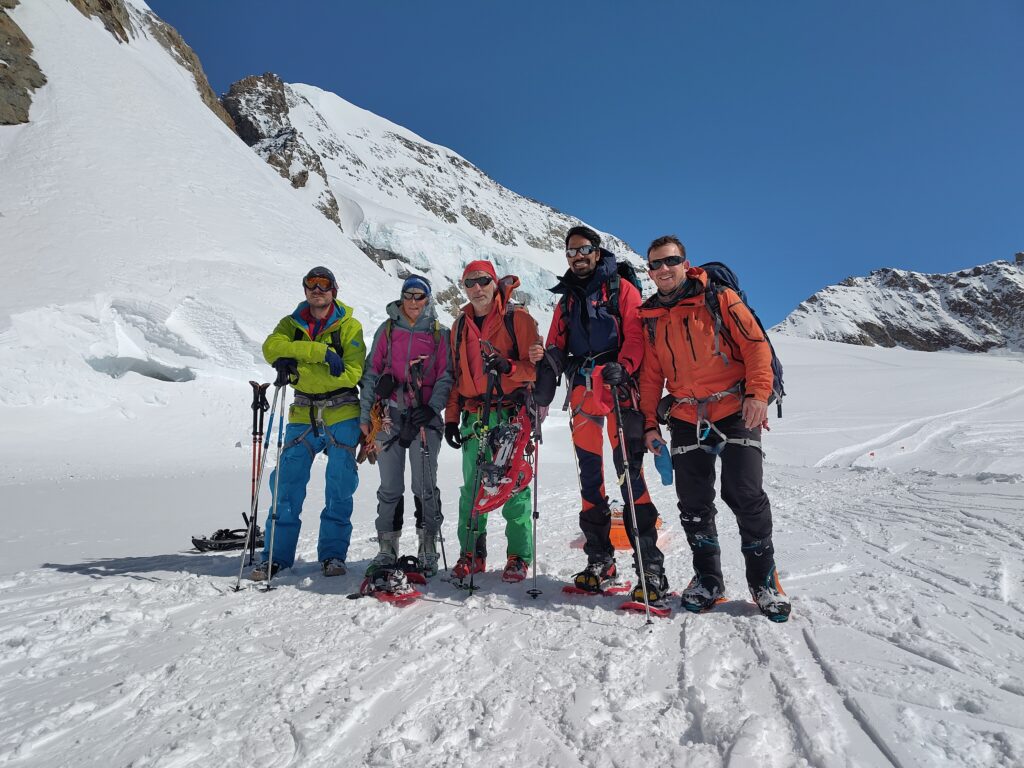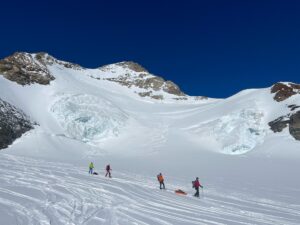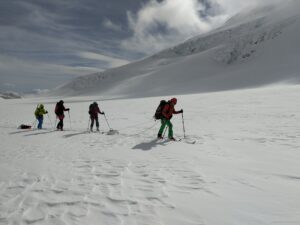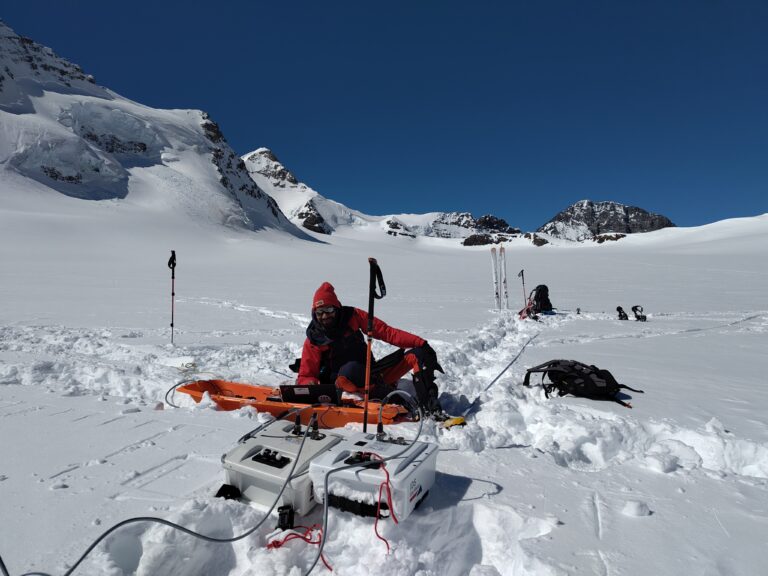A much-awaited winter 2025 Aletsch expedition was carried out to attain repeat glaciological and geophysical measurements at locations similar to the winter 2024 Aletsch campaign. An expedition aimed to detect changes in firn stratigraphy and firn density over two consecutive years under the influence of regional climatic changes. This was achieved by using Ground Penetrating Radar (GPR) profiling across the two main accumulation zones of the Aletsch glacier. The GPR-based common mid-point (CMP) method was used to gather indirect firn density measurements. This was complemented by the deep firn core (nearly 20 m) at the upper part of the Ewigschneefeld, a shorter firn core (approximately 8 m) at the lower part of the Ewigschneefeld, and two snow pits at Jungfraufirn and the Ewigschneefeld.
This expedition is part of the M3OCCA international doctoral program (IDP) project SP2.3. The campaign was a collaborative effort of Paul Scherrer Institute (PSI), Bern, Switzerland, BAdW, Munich, and FAU Erlangen, Germany.
We appreciate the efforts of the firn core team, Dr. Theo Jenk, Michelle Worek (PhD), and Samuel Marending from Laboratory of Analytical Chemistry, PSI Bern, Switzerland, Dr. Christoph Mayer, Dr. Astrid Lambercht, and Akash Patil (PhD) from Department of Geodesy and Glaciology BAdW Munich, Germany, and Dr. Thorsten Seehaus and Dr. Alexander Groos from Institute of Geography FAU Erlangen, Germany.




A much-awaited winter 2025 Aletsch expedition was carried out to attain repeat glaciological and geophysical measurements at locations similar to the winter 2024 Aletsch campaign. An expedition aimed to detect changes in firn stratigraphy and firn density over two consecutive years under the influence of regional climatic changes. This was achieved by using Ground Penetrating Radar (GPR) profiling across the two main accumulation zones of the Aletsch glacier. The GPR-based common mid-point (CMP) method was used to gather indirect firn density measurements. This was complemented by the deep firn core (nearly 20 m) at the upper part of the Ewigschneefeld, a shorter firn core (approximately 8 m) at the lower part of the Ewigschneefeld, and two snow pits at Jungfraufirn and the Ewigschneefeld.
This expedition is part of the M3OCCA international doctoral program (IDP) project SP2.3. The campaign was a collaborative effort of Paul Scherrer Institute (PSI), Bern, Switzerland, BAdW, Munich, and FAU Erlangen, Germany.
We appreciate the efforts of the firn core team, Dr. Theo Jenk, Michelle Worek (PhD), and Samuel Marending from Laboratory of Analytical Chemistry, PSI Bern, Switzerland, Dr. Christoph Mayer, Dr. Astrid Lambercht, and Akash Patil (PhD) from Department of Geodesy and Glaciology BAdW Munich, Germany, and Dr. Thorsten Seehaus and Dr. Alexander Groos from Institute of Geography FAU Erlangen, Germany.